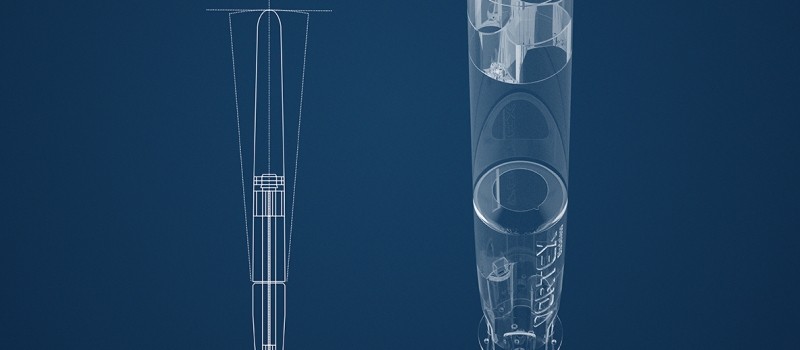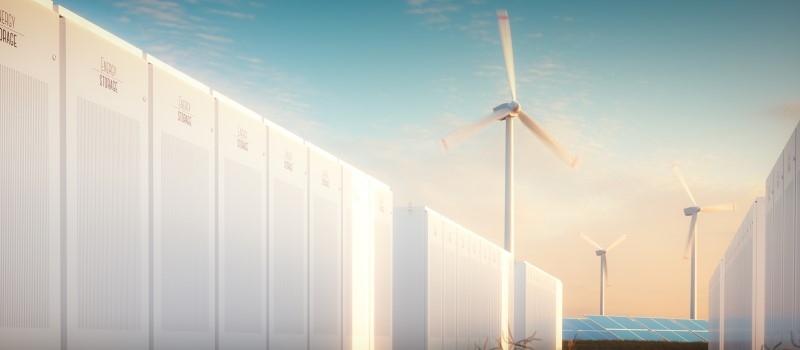With the popularization of the concept of environmental protection, the use of small generators in the home has gradually increased. Generally speaking, wind turbines below 10KW can be called small wind turbines. Compared with medium-sized and large wind turbines, small wind turbines have the advantages of being small and flexible, easy to install, low cost, low requirements for starting wind speed, cost-effective, and complementary to photovoltaic and other power generation devices. If you are considering a wind turbine to power your home, this blog will provide you with a brief buying guide to help you make an informed choice.
Wind Turbine Type Selection
There are two main types of household wind turbines: vertical axis wind turbines and horizontal axis wind turbines. Horizontal Wind Turbines vs. Vertical Axis Wind Turbines provides more information about the similarities and differences between the two types of generators.
Vertical Axis Wind Turbines: Smaller in size and lower in noise, suitable for installation in urban residential areas. However, their power generation efficiency is relatively low and they are suitable for areas with weak wind resources. The design of vertical-axis wind turbines makes them more sensitive to changes in wind direction and able to maintain high efficiency under variable wind conditions.
Horizontal Axis Wind Turbines: Higher power generation efficiency, suitable for areas with richer wind resources. However, the volume is larger and the noise is relatively high, which may have an impact on the surrounding residents' lives. Horizontal axis wind turbines are the most common type on the market today, and they are capable of generating more power at higher wind speeds.

In addition to the two traditional wind turbines mentioned above, there is also a type of bladeless wind turbine. They are based on magnetic levitation or ionized wind technology and do not use visible rotating blades, reducing noise and mechanical wear and tear, which are problems with bladed wind turbines.
Key Points for Selecting Wind Turbines
Power Requirements
According to the household electricity needs, choose the appropriate power of the wind turbine generator, the rated power of the purchased generator should be slightly greater than the total power of the electrical appliances used in the household, to ensure that all kinds of electrical appliances can work properly. In general, the power of home wind turbines ranges from 400 watts to 10 kilowatts. For example, an average household may need a 1 kW to 3 kW wind turbine to meet its daily electricity needs.
Wind Resources
Before purchasing a wind turbine, it is important to understand the wind resources in your area. You can obtain relevant information by reviewing local meteorological data or consulting with experts. For example, understand the local average annual wind speed, wind distribution and seasonal wind changes, etc. This information is critical to selecting the right wind turbine.
For areas with low average annual wind speed and wind force of 2 (wind speed of 2.5 m/s) or more, small permanent magnet wind turbines can be used. In areas with high average annual wind speed and wind force of 4-5 levels (wind speed of 6-8 meters/second) or more, an excitation-type wind turbine can be used. If you mainly rely on wind power for home power supply, you also need to choose the right battery according to the length of the windless period. Short windless period of the region, you can buy small capacity batteries; long windless period of the region, you can buy large capacity batteries.

Installation Site
Consider the installation conditions of your own home, such as roof area and shading from surrounding buildings. Also, make sure the siting complies with local codes and regulations. For example, some regions may have specific requirements regarding the height of the wind turbine, distance from buildings, and other obstructions.
Safety
When choosing a wind turbine, it is also necessary to pay attention to the quality and safety of the equipment to prevent its fan blades from flying out or falling off in high winds. On the one hand, you should buy equipment with reliable quality, superior quality and craftsmanship, and minimize the number of purchases; on the other hand, you should also pay attention to matching the characteristics of the equipment with the local meteorological characteristics, so as to avoid safety accidents caused by improper selection. You can add the purchase of intelligent wind turbine controller with braking and dumping function to prevent safety accidents.
Economy & Brand
In order to save money, it is necessary to consider economics and select the most cost-effective equipment program. Economics include factors such as the cost, lifetime, and maintenance costs of the equipment. When selecting equipment, costs should be strictly controlled to ensure that the equipment selection is in line with the local wind energy resources and that the service life is as long as possible with relatively low maintenance costs.
Choose products of well-known brands to ensure quality and after-sales service. At the same time, understand the manufacturer's warranty period and maintenance policy. For example, some brands may offer warranty period up to several years, as well as convenient repair services. PowerHome online store provides perfect after-sales service, welcome your purchase.
Environmental Impact of Wind Turbines

In general, the larger the diameter of a wind turbine's blades, the larger the area of wind captured during rotation and the higher the power output. Buyers will naturally want to purchase a high performance product, but large diameter blades can have some negative impacts that must be considered:
- Noise: Wind turbines produce a certain amount of noise during operation, especially at night. When purchasing, it is important to choose products with low noise levels and to ensure that the installation location will not impact the lives of nearby residents. For example, choose a wind turbine with a noise-reducing design and carefully consider the location.
- Injury to Birds: The rotating blades of wind turbines can injure birds, and large fan blades are more likely to do so. To minimize bird injury, you may choose to install a bird detection system or bird deterrents near the wind turbine. In addition, choosing a wind turbine with blades that are similar in color to the surrounding area can also reduce the attraction to birds.
- Impact on Urban Landscape: The appearance and siting of wind turbines can have an impact on the urban landscape. When selecting wind turbines, it is important to consider how their appearance will blend with their surroundings. For example, wind turbines with minimalist designs and muted colors can be selected to reduce the impact on the urban landscape.
To summarize, when purchasing a home wind turbine, you should fully consider factors such as wind resources, siting, power needs, noise and environmental impact. At the same time, you may also need to understand local installation guidelines and grid conditions to ensure smooth installation and operation of the wind turbine. We hope this blog will be a useful reference for your purchase decision.
(1).png)
(1).png)